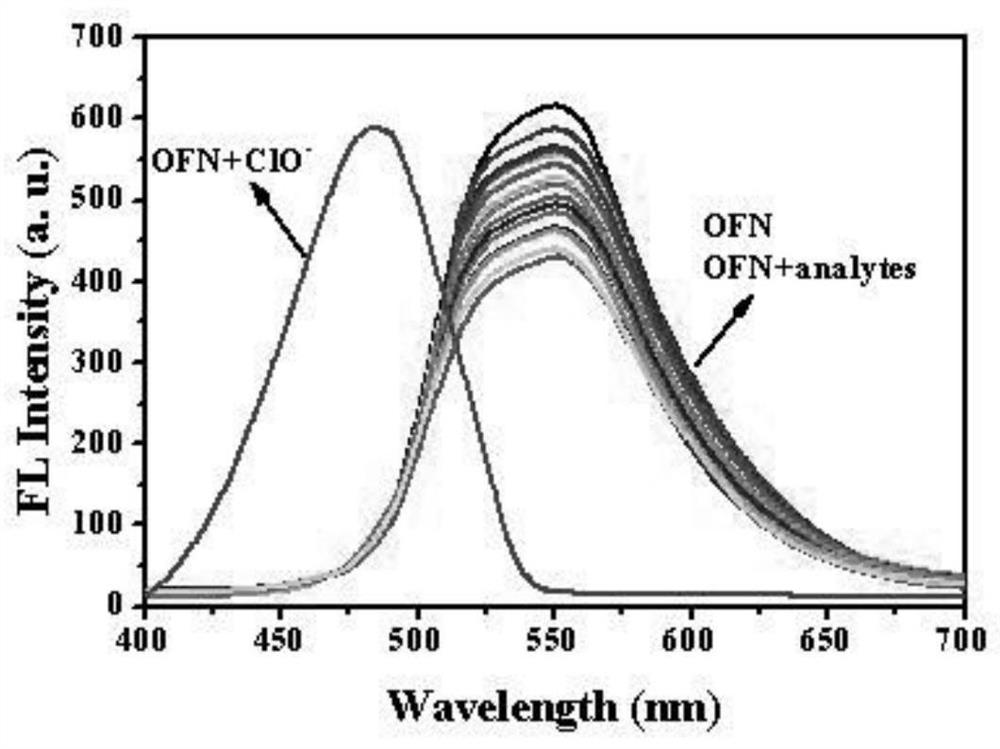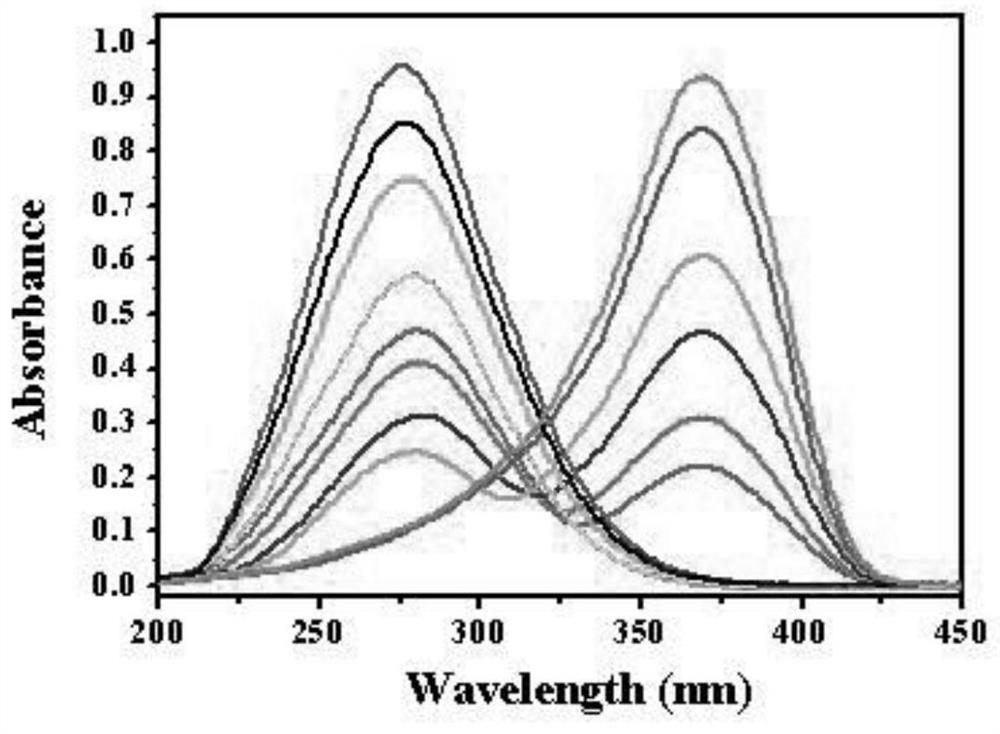A kind of fluorescent probe for detecting hypochlorite ion and its preparation method and application
A fluorescent probe, hypochlorite technology, used in fluorescence/phosphorescence, chemical instruments and methods, luminescent materials, etc., can solve the problems of detection affected by other ions, fluorescence color changes, long reaction time, etc., and achieve enhanced fluorescence intensity. , high selectivity and sensitivity, the effect of high sensitivity
- Summary
- Abstract
- Description
- Claims
- Application Information
AI Technical Summary
Problems solved by technology
Method used
Image
Examples
Embodiment 1
[0030] The preparation method of 3-3-(4 "-formyl-1 ', 1 "-biphenyl-4'-formaldehyde oxime) nopinone-based fluoroboron complex, the reaction formula is as follows:
[0031]
[0032] Specific steps are as follows:
[0033] 1. Preparation of 3-(4″-formyl-1′, 1″-biphenyl-4′-formaldoxime)nopinone:
[0034] Add 0.04mol 3-(4″-formyl-1′,1″-biphenyl-4′-carbonyl)nopineone, 0.06mol hydroxylamine and 30mL ethyl acetate in sequence to a condenser equipped with a stirrer, thermometer and reflux In a three-necked flask, the reaction was carried out under reflux for 6 h, and the reaction progress was tracked by thin-layer chromatography. Add 50 mL of ethyl acetate to the reaction solution, wash with distilled water, dry the organic phase over anhydrous sodium sulfate, filter, and concentrate to recover the solvent to obtain 3-(4″-formyl-1′,1″-biphenyl-4′- formaldehyde oxime) nopinone crude product. The crude product of 3-(4″-formyl-1′, 1″-biphenyl-4′-formaldehyde oxime) nopinone was subj...
Embodiment 2
[0038] Solid 3-(4″-formyl-1′, 1″-biphenyl-4′-formaldehyde oxime) nopinone-based fluoroboron complex and HSO 3 - , HS - , F - , Cl - , AcO - , NO 3 - , HSO 4 - , H 2 PO 4 - , ClO 4 - , SO 4 2- , CO 3 2- , ClO - , H 2 o 2 , ROO·, HO·, NO·, etc. 16 different anions and reactive oxygen species were dissolved in PBS buffer solution (10mM, pH=7.2, 6 / 4(v / v)), and the concentration was prepared to be 1.0×10 -6 M probe solution and a concentration of 1.0 x 10 -5 Solutions of 16 different anions of M. Under the condition of excitation wavelength of 350nm, the fluorescence intensity changes in the presence of different anions were measured, such as figure 1 shown. The results showed that in ClO - In the presence of ions, the maximum emission wavelength of the solution blue shifts from 550nm to 485nm. The fluorescent color of the solution changed from yellow to green under the ultraviolet light, indicating that the compound was sensitive to ClO - ions have better...
Embodiment 3
[0040] Dissolve 3-(4″-formyl-1′, 1″-biphenyl-4′-formaldoxime) nopinone-based fluoroboron complex in PBS buffer (pH=7.2, 10 mM, 6 / 4( v / v)), prepared to a concentration of 1.0×10 -6 M solution, the same ClO - Soluble in PBS buffer solution to make concentrations of 0, 1, 2, 4, 6, 8, 10, 20, 40, 60, 80, 100, 200×10 -7 M's solution. Different concentrations of ClO were measured - The UV absorption spectrum of ion-pair 3-(4″-formyl-1′, 1″-biphenyl-4′-formaldehyde oxime) nopinone-based fluoroboron complex, such as figure 2 shown. The results show that the ultraviolet absorption intensity of the compound around 280nm is obviously weakened, and the ultraviolet absorption intensity around 360nm is obviously enhanced. Illustrate that 3-(4″-formyl-1′, 1″-biphenyl-4′-formaldoxime) nopinone-based fluoroboron complex can be used as a color ratio probe for ClO - to test.
PUM
| Property | Measurement | Unit |
|---|---|---|
| melting point | aaaaa | aaaaa |
Abstract
Description
Claims
Application Information
 Login to View More
Login to View More - Generate Ideas
- Intellectual Property
- Life Sciences
- Materials
- Tech Scout
- Unparalleled Data Quality
- Higher Quality Content
- 60% Fewer Hallucinations
Browse by: Latest US Patents, China's latest patents, Technical Efficacy Thesaurus, Application Domain, Technology Topic, Popular Technical Reports.
© 2025 PatSnap. All rights reserved.Legal|Privacy policy|Modern Slavery Act Transparency Statement|Sitemap|About US| Contact US: help@patsnap.com



